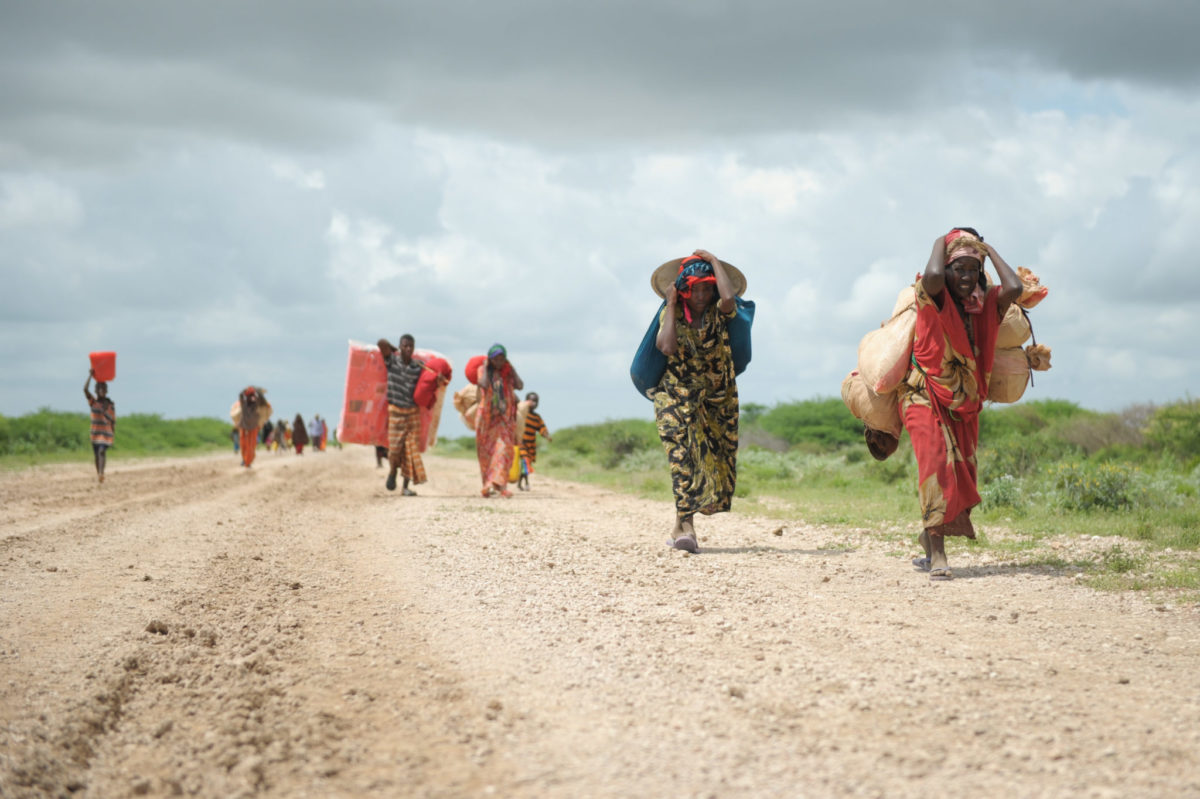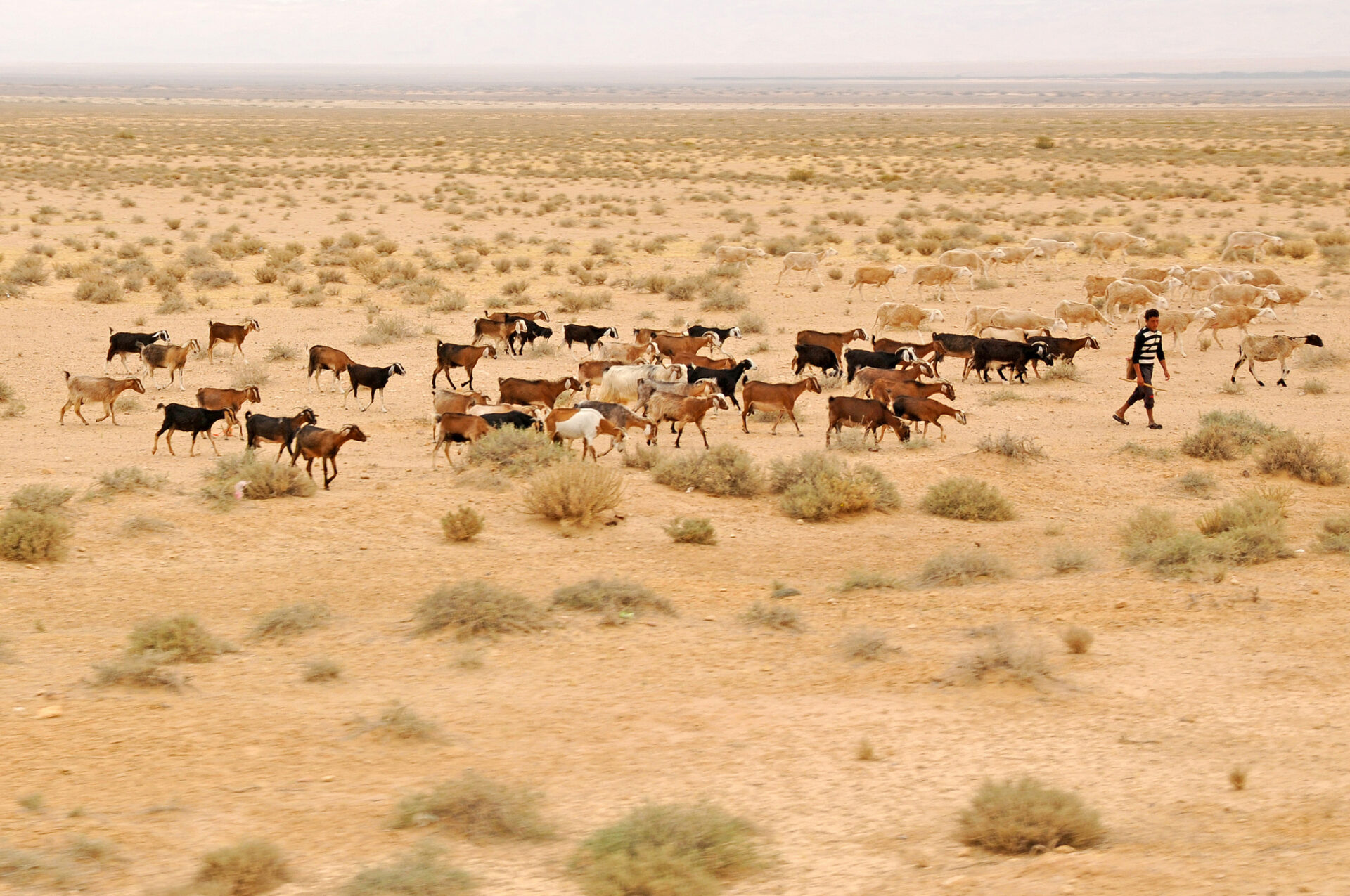E-learning course on human mobility in the context of climate change

- Level: Introductory
- Time commitment: 8 hours (estimated)
- Learning product: online course (self-paced)
- Sector: migration, human mobility
- Language: English
- Certificate available: on passing of a final test, a PDF course certificate and an Open Badge are attained.
This course is hosted on Atingi. Please find the Human mobility in the context of climate change course where you can enrol for full access.
Introduction
Climate change impacts are changing patterns of human mobility worldwide and researchers and policy makers are increasingly aware of this connection. However, the relationship between the impacts of climate change and human mobility is complex.
In this interactive self-paced course, policy makers, development professionals, researchers and students will learn how climate change influences human mobility. By introducing key concepts like climate related migration, disaster displacement, planned relocation and trapped populations, this training will build capacities needed to consider human mobility in the context of climate change (HMCCC) in your respective field of work. The training showcases diverse examples from different countries on the phenomena of HMCCC as well as options how to manage it.
Institutional background
This course is jointly developed by UNU-EHS, UNU-VIE and the Deutsche Gesellschaft für Internationale Zusammenarbeit (GIZ) GmbH.
Who is the course for?
This course is designed for policy makers and staff of government institutions as well as professionals within the field of development. Researchers, students, and anyone interested in learning more about how climate change impacts human mobility are invited to take the course as well.
Training material
Each module takes about 45 minutes to complete but you can take the course at your own pace. We estimate it will take around eight hours in total to complete the whole course. However, depending on your preference you might need more time to study the additional sources and information provided.
Furthermore, the course aims to raise questions which you may discuss with your colleagues. The course consists of nine thematic modules. The modules are designed to be stand-alone learning experiences. While they are sequential, they are self-contained and can be completed independently.
- Module 1: Introduction to Human Mobility in the Context of Climate Change
- Module 2: Measuring and projecting HMCCC
- Module 3: Migration
- Module 4: Displacement
- Module 5: Planned Relocation
- Module 6: Trapped Populations
- Module 7: Gender and HMCCC
- Module 8: HMCCC and Frameworks
- Module 9: Peace, Conflict & Fragility.
Learning outcomes
By the end of the course participants will be able to:
- apply key concepts of HMCCC and relevant definitions.
- distinguish different types of human mobility in the context of climate change, especially migration, displacement, planned relocation and immobility, and explain their characteristics.
- explain how climate change influences human mobility as one of multiple factors.
- understand that migration can be applied as a strategy to adapt to negative impacts of climate change.
- identify policy options and response strategies for the different forms of HMCCC.
- understand how gender influences human mobility and how human mobility influences gender patterns and roles.
- describe the linkages between climate change, conflict and mobility.
The learning outcomes can benefit your professional work as you will be able to:
- understand the concept of HMCCC and its relevance to your own work; this requires correct contextualising of data and application of definitions and terms in order to analyse the topic on a professional level.
- integrate relevant elements of the course in political and strategic documents in order to reflect HMCCC in policies on migration, disaster risk management, climate change and others.
- translate different perspectives and cross-sectoral linkages of HMCCC into the sector you are working in.
- integrate international and regional frameworks and actors, which are relevant to developments in your own country, into your respective work.
- develop specific activities and instruments for implementation of HMCCC in your own context.




(0) Comments
There is no content